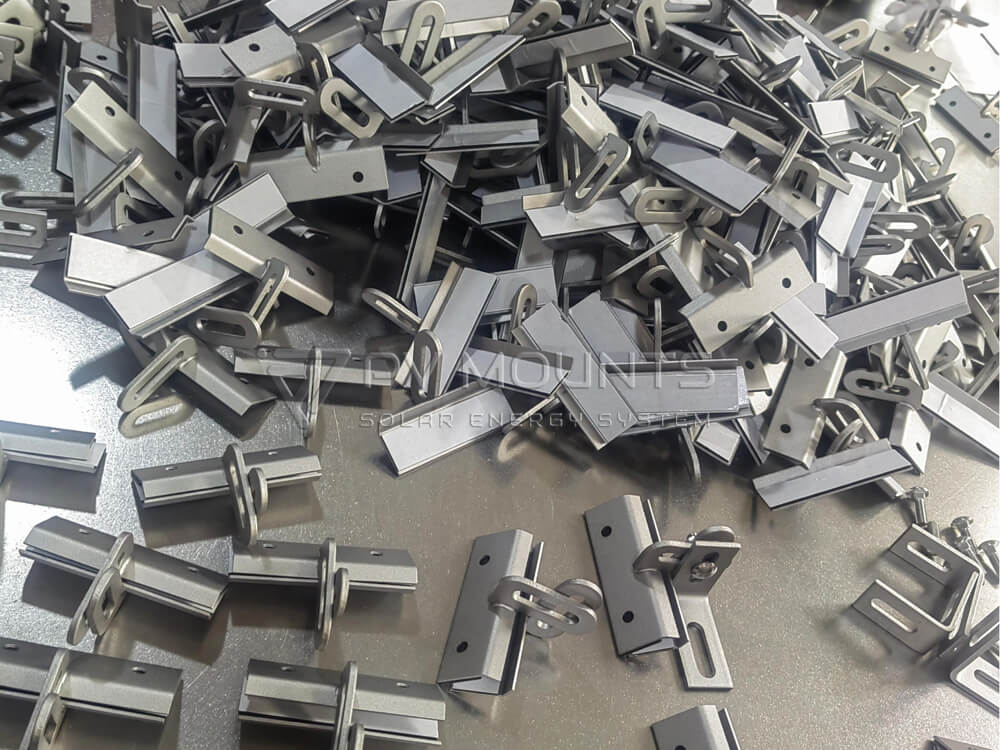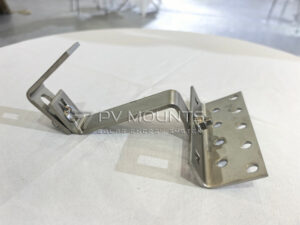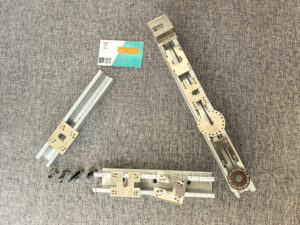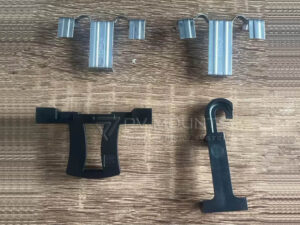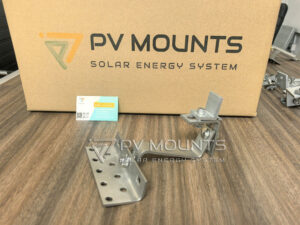Tabla de conținut
Introducere
In solar power systems, the strength of the mounting structure often determines the long-term success of the project. Panels may be the face of a system, but it’s the small components like roof hooks that carry the load and keep everything in place for decades. This is why choosing the right material is important. Stainless steel has always been a top choice due to its strength, durability, and ability to withstand harsh weather.
Among various stainless steel grades, SUS430 material is popular for solar tin roof hook applications. It provides a balance between performance and cost, making it a favorite for EPC contractors and solar installers. While it doesn’t have the same high corrosion resistance as SUS304 or SUS316, it delivers enough strength and lifespan in many inland regions where environmental stress is moderate.
By understanding why SUS430 is so widely chosen, solar companies can make more wise decisions when balancing project budgets and long-term reliability.
Why SUS430 Material is Popular for Solar Tin Roof Hook
SUS430 is a ferritic stainless steel with a chromium content of 16–18%. Unlike SUS304 or SUS316, it does not contain nickel, which makes it much more affordable. Despite this, SUS430 still offers significant advantages and is suitable for many solar racking projects.
Its ferritic structure gives it good thermal conductivity and high resistance to stress cracking. In addition, the chromium layer forms a passive film that resists oxidation. These qualities allow SUS430 to perform well under outdoor exposure, provided the site is not extremely humid or close to salty coastal air.
For solar tin roof hooks, SUS430 offers enough tensile strength to hold solar rails and panels securely, making it a safe and economical option for budget-conscious projects.
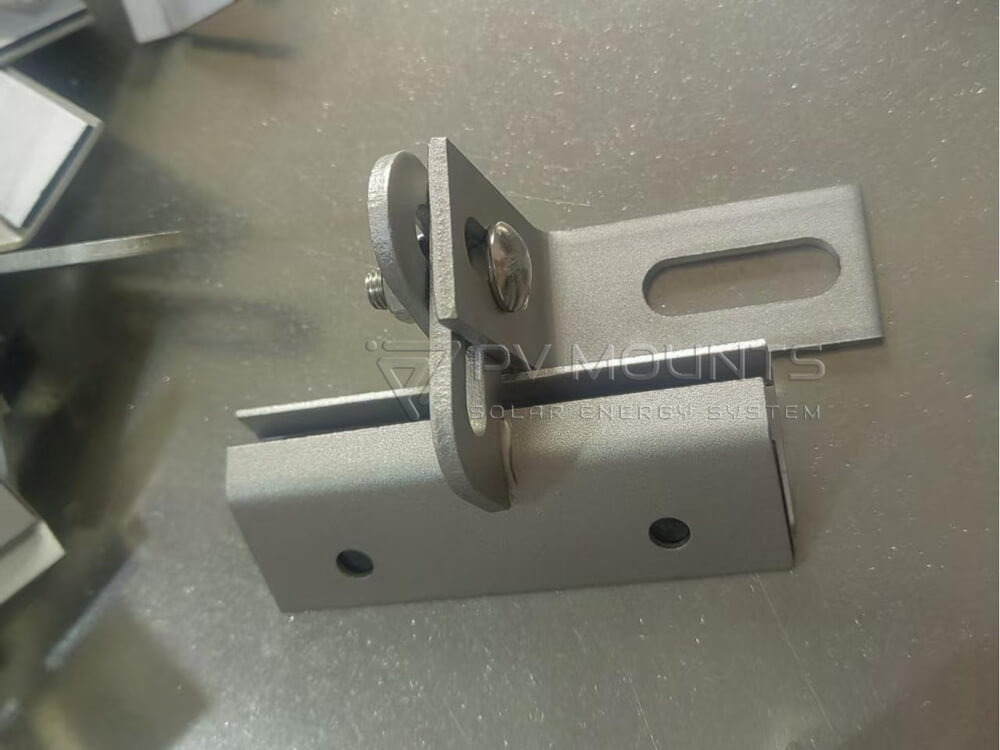
Advantages of Using SUS430 in Solar Mounting
The popularity of SUS430 material for solar tin roof hook installations have several benefits:
- Cost savings for solar EPC contractors: Without nickel in its composition, SUS430 is cheaper to produce. For large projects, this translates into thousands of dollars in savings on hardware.
- Durability under normal climates: SUS430 performs well in dry or inland climates, resisting rust and wear for many years.
- Resistance to heat and wear: It can tolerate high temperatures without scaling, which is an advantage in hot and sunny climates.
For residential projects, small commercial rooftops, or inland solar farms, SUS430 offers a reliable and cost-effective solution that doesn’t compromise safety.
Comparing SUS430 with SUS304 and SUS316
Choosing between SUS430, SUS304, and SUS316 depends on climate conditions and project goals.
| Property | SUS430 | SUS304 | SUS316 |
|---|---|---|---|
| Nickel Content | None | 8–10% | 10–14% |
| Rezistența la coroziune | Moderate | High | Very High |
| Costuri | Low | Medium | High |
| Best Use | Inland areas | General use | Coastal/marine areas |
- Composition differences: The absence of nickel in SUS430 lowers cost but also reduces corrosion resistance.
- Performance: SUS304 is better in humid conditions, and SUS316 excels in salty, marine environments.
- Price: SUS430 is the most affordable, making it the preferred choice for inland solar projects.
For example, an EPC contractor working on a solar project in central Asia would likely choose SUS430, while a coastal installation in the Philippines would require SUS316 for long-term durability.
Applications of SUS430 for Tin and Metal Roofs
SUS430 hooks are especially useful in projects involving metal and tin roofs, which are common in residential and commercial buildings:
- Acoperișuri rezidențiale: Many homes with tin sheets can benefit from cost-effective SUS430 hooks, ensuring a secure solar installation.
- Commercial warehouses: Large flat or trapezoidal tin roofs on warehouses provide an excellent surface for SUS430-based mounting systems.
- Industrial buildings: Factories with metal roofing often adopt SUS430 hooks due to the balance between affordability and performance.
Its compatibility with thin tin sheets makes SUS430 a practical solution for a wide range of roof profiles.
Design and Features of Solar Tin Roof Hooks
Solar tin roof hooks using SUS430 material come in different shapes and designs:
Adjustable vs fixed options: Adjustable hooks allow better alignment when roofs are uneven.
- Waterproofing considerations: EPDM rubber gaskets and sealing washers are typically included to prevent leaks.
These features ensure not just the durability of the solar mounting system but also the protection of the underlying roof.
Installation Guide for SUS430 Solar Tin Roof Hook
Installing SUS430 hooks on tin roofs requires precision to ensure strength and water resistance:
- Locate rafters or roof purlins to anchor the hooks securely.
- Mark and drill pilot holes carefully to avoid damaging roofing sheets.
- Place the hook with sealing gasket to ensure waterproofing.
- Secure with self-tapping screws using the correct torque.
- Attach rails and clamps before positioning solar panels.
Tools needed: power drill, torque wrench, sealing materials, and protective gloves.
By following these steps, installers can guarantee a safe and long-lasting system.
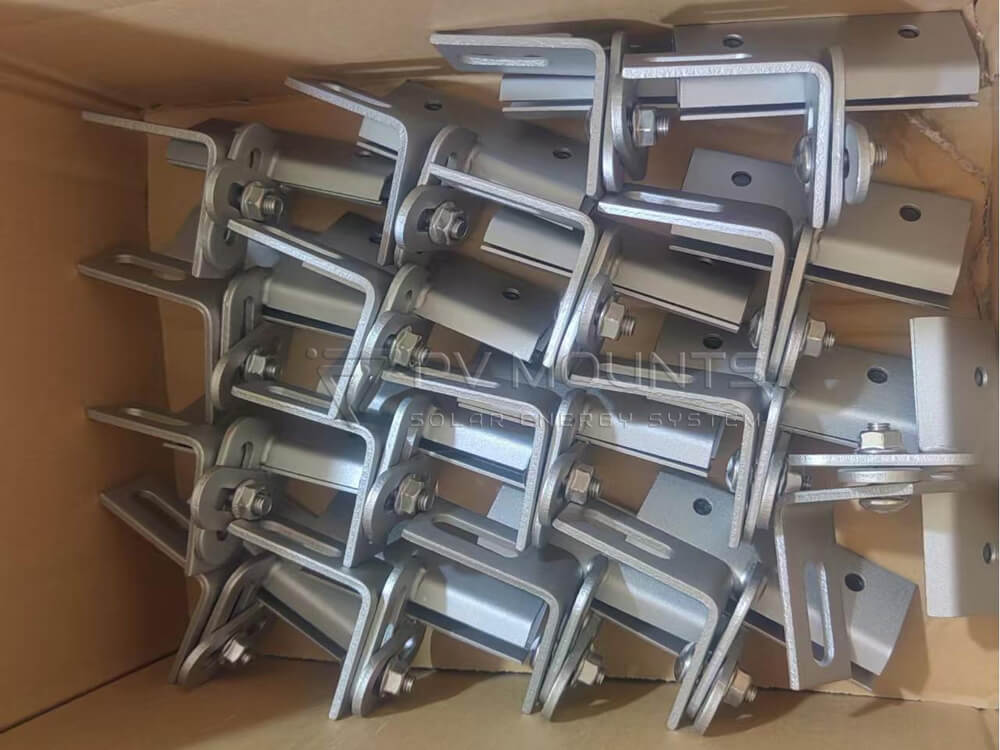
Global Adoption and Case Studies
SUS430 hooks are used in many regions worldwide where cost and performance need to be balanced:
- Southeast Asia: Large schools and factory rooftops in Vietnam and Thailand prefer SUS430 due to cost savings.
- African markets: Solar farms in Kenya and Nigeria have successfully used SUS430 in inland regions.
- Cost-effective solar farms: Projects in India report hardware savings of up to 20% when choosing SUS430 over SUS304.
These real-world cases highlight why SUS430 has become so popular in the solar industry.
FAQs on Why SUS430 Material is Popular for Solar Tin Roof Hook
Q:Is SUS430 material strong enough for solar roof hooks?
A:Yes, SUS430 provides sufficient strength for holding solar panels on tin and metal roofs in non-coastal environments.
Q:How long does SUS430 last on a solar project?
A:Typically 15–25 years, depending on climate and maintenance.
Q:Can SUS430 be used in humid areas?
A:It can be used, but protective coatings or mixing with higher-grade stainless steel is recommended.
Q:Why is SUS430 cheaper than SUS304?
A:Because it does not contain nickel, which is an expensive alloying element.
Q:Does SUS430 perform well in hot climates?
A:Yes, it resists heat and maintains strength even in high-temperature environments.
Q:Is SUS430 environmentally friendly?
A:Yes, like other stainless steels, it is fully recyclable and has a lower production footprint compared to other metals.
Conclusion: Balancing Cost and Performance with SUS430
SUS430 is widely used because it strikes the right balance between strength, durability, and cost. While it doesn’t match the higher corrosion resistance of SUS304 or SUS316, it still performs well for most inland solar projects. For EPC contractors and solar installers working with limited budgets, it offers a reliable and economical choice.
When project location and climate are carefully considered, SUS430 becomes a smart option for building solar mounting systems that are both durable and cost-effective.


